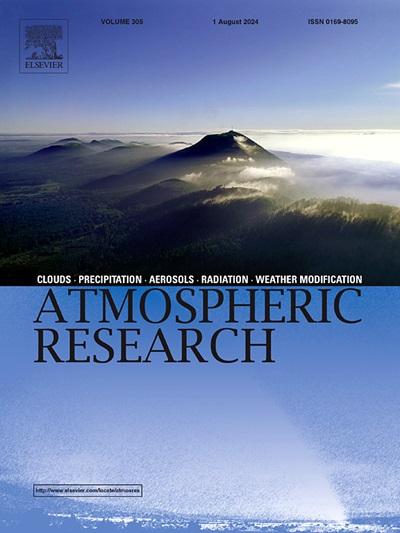Impact of different scale-aware cumulus parameterizations on precipitation forecasts over Korea
IF 4.5
2区 地球科学
Q1 METEOROLOGY & ATMOSPHERIC SCIENCES
引用次数: 0
Abstract
This study aims to evaluate and improve the performance of the scale-aware cumulus parameterization scheme (CPS) in the Korean Integrated Model (KIM), referred to as KSAS. The performance of the KSAS for simulating precipitation over Korea is first evaluated in comparison with other scale-aware CPSs available in the Weather Research and Forecasting (WRF) model by conducting a series of experiments at multiple horizontal resolutions, including the gray zone. The results show that the KSAS significantly improves precipitation forecast skill compared to its original version. However, its performance is lower than that of the other scale-aware CPSs at 27-km and 9-km spatial resolutions due to the substantial contribution of cumulus parameterization. To address issues in the scale-aware parameterization of KSAS, the method for defining the convective updraft fraction is revised to adopt a more physically based approach. The WRF simulation results demonstrate improved precipitation forecast skill with the revised scale-aware parameterization at the gray-zone resolution, where the contribution of cumulus parameterization is significantly reduced. Further evaluation of the revised scheme in KIM also reveals enhanced medium-range forecast skill for both large-scale fields and precipitation at horizontal resolutions of NE360NP3 (∼12 km) and NE576NP3 (∼8 km). The warm bias in the mid-latitudes of the Northern Hemisphere is alleviated by reduced convective heating. Notably, the revised scheme exhibits a pronounced improvement in the skill for forecasting precipitation over the Korean Peninsula, better capturing the pattern and intensity of the precipitation core for heavy rainfall events, as confirmed by higher skill scores.
求助全文
约1分钟内获得全文
求助全文
来源期刊

Atmospheric Research
地学-气象与大气科学
CiteScore
9.40
自引率
10.90%
发文量
460
审稿时长
47 days
期刊介绍:
The journal publishes scientific papers (research papers, review articles, letters and notes) dealing with the part of the atmosphere where meteorological events occur. Attention is given to all processes extending from the earth surface to the tropopause, but special emphasis continues to be devoted to the physics of clouds, mesoscale meteorology and air pollution, i.e. atmospheric aerosols; microphysical processes; cloud dynamics and thermodynamics; numerical simulation, climatology, climate change and weather modification.
 求助内容:
求助内容: 应助结果提醒方式:
应助结果提醒方式:


